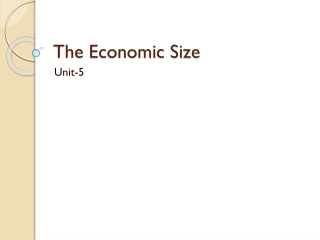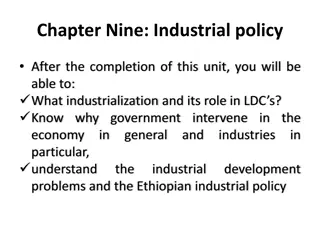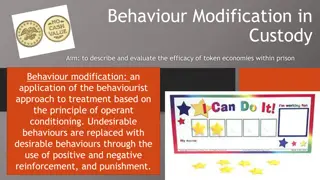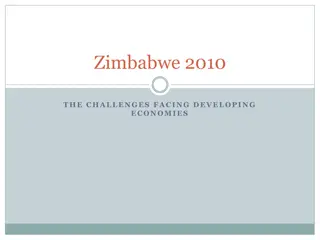Energy Leapfrogging: Advancing Technology in Developing Economies
Energy leapfrogging entails the advancement of energy technology in developing economies, such as the deployment of solar panels in rural areas and the adoption of biofuels. This strategy aims to accelerate progress towards sustainable energy solutions while circumventing traditional infrastructure challenges. However, impediments like outsourcing and potential technology rebounds pose challenges. Technology transfer initiatives, like the Green Climate Fund and the Paris Agreement, raise questions of fairness and effectiveness in supporting less developed countries. While utilizing Western technology can aid in transitioning away from carbon-based energy sources, it is not a standalone solution to anthropogenic climate change.
Download Presentation

Please find below an Image/Link to download the presentation.
The content on the website is provided AS IS for your information and personal use only. It may not be sold, licensed, or shared on other websites without obtaining consent from the author.If you encounter any issues during the download, it is possible that the publisher has removed the file from their server.
You are allowed to download the files provided on this website for personal or commercial use, subject to the condition that they are used lawfully. All files are the property of their respective owners.
The content on the website is provided AS IS for your information and personal use only. It may not be sold, licensed, or shared on other websites without obtaining consent from the author.
E N D
Presentation Transcript
Energy Leap Frogging Devin W. Riggins
What is Energy Leapfrogging? Energy leapfrogging an advancement of energy technology in developing economies. Examples: Solar panels in poor rural areas, high fuel-economy cars in India, adoption of biofuels/bio gasification in Brazil Is it effective on a macroscale? What are impediments?
Impediments: Outsourcing 2006 United Nations Environment Programme Web site manager: EDE Team of UNEP/DEWA/GRID-Europe
Impediments: Technology Rebound Source: Journal of the Association of Environmental and Resource Economists, Vol. 2, No. 1
Technology Objectives UNFCC (a) To prioritize resources (b) To enhance public and private partnerships in the research, development and demonstration of climate technologies (c) To strengthen national systems of innovation
Example - Uruguay Sierra de los Caracoles wind farm.
Programs for Development Paris (COP 21) Green Climate Fund UNFCC
Debate Debate: Separate into three groups and act as opposing countries with regards to Paris Climate Technology initiatives. Country number 1 is China, country number 2 is India and country number three is the small island nation of Kiribati, now facing imminent threat from sea level rise. Based off what you know, do you think technology transfer initiatives such as green climate fund or the Paris agreement are fair on behalf of all of these countries as they relate to green technology? How do you think we could help less developed countries spur movement away from carbon based energy sources utilizing technology from the west? Is this alone a solution to anthropogenic climate change?
Work Cited Energy Leapfrogging Author(s): Arthur A. van Benthem Source: Journal of the Association of Environmental and Resource Economists, Vol. 2, No. 1 (March 2015), pp. 93-132 Published by: The University of Chicago Press on behalf of the Association of Environmental and Resource Economists Stable URL: http://www.jstor.org/stable/10.1086/680317 . Accessed: 4/12/2018 Froese, M. (2018). Nordex commissions largest wind farm in Uruguay. [online] Windpower Engineering & Development. Available at: https://www.windpowerengineering.com/business-news- projects/nordex-commissions-largest-wind-farm-uruguay/ [Accessed 15 Apr. 2018].























